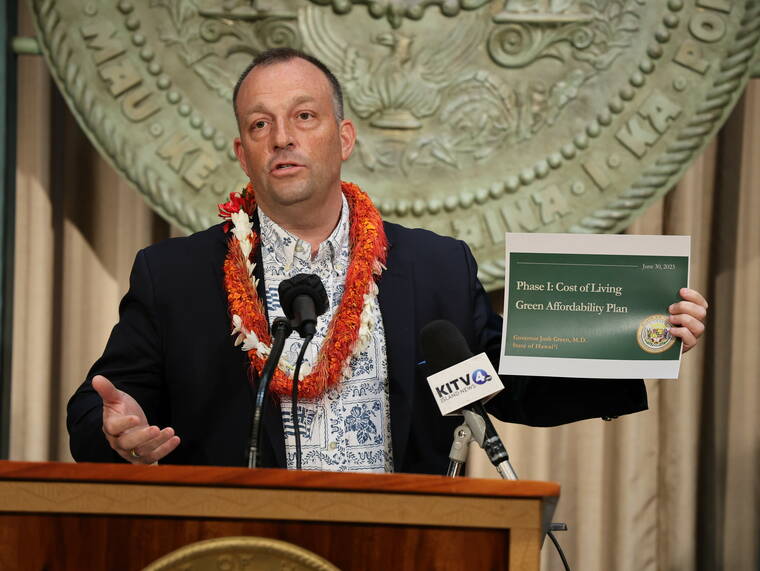Some tax credits for cash-strapped Hawaii residents will at least double next year under a new law signed today by Gov. Josh Green.
The governor signed into law the first part of the Green Affordability Plan, which doubles a food/excise tax credit for low-income filers and more than quadruples the state’s child and dependent care tax credit cap.
The bill, House Bill 954, specifically targets “ALICE families,” an acronym meaning “asset-limited, income-constrained and employed,” a designation that applies to roughly 34% of Big Island households, according to the county Department of Research and Development.
“It is too expensive to live in Hawaii for so many people,” Green said. “We had to help. One job has to be enough.”
ALICE families fall under an unfortunate income range that puts them above the federal poverty line — and therefore out of eligibility for many financial assistance programs — but still below the high cost of living in Hawaii.
Research and Development Director Douglass Adams said that based on 2021 data, there are more than 22,000 ALICE households on the Big Island, and another 11,000 households below the poverty line, all of which likely will qualify for the expanded credits.
With the new credits, the state’s refundable food/excise tax credit will be doubled. Where before that credit ranged from $35 to $110 for taxpayers makingless than $30,000 per year, now the credit ranges between $70 to $220 for those making less than $60,000 annually.
The refundable earned income tax credit — which Green called “probably the most effective anti-poverty method we’ve got” — also is being doubled, allowing taxpayers to claim 40% of their federal earned income tax credit on their state tax returns.
Finally, the child and dependent care tax credit, which allows taxpayers who care for children or dependents to claim a percentage of employment- or care-related expenses as a tax credit, will be significantly expanded.
Previously, the credit’s maximum size was limited to $2,400 for those with a single dependent, or $4,800 for those with more. Now, however, the credit is $10,000 for a single dependent and $20,000 for multiple.
Green said the breaks collectively will provide $104 million to working families around the state.
The Green Affordability Plan originally included other credits, such as a tax credit for teacher expenses, an income tax credit for low-income renters, and a more elaborate change to the dependent care tax credit.
Green said today that HB 954 represents phase one of the plan, and that next year he will introduce more credits in phase two.
“Over time, we’d like to move more toward $250 million in tax breaks, and that’s what phase two will look like, but this was an excellent start,” Green said. “I think that this is the beginning of turning the corner for families that can’t afford to live and otherwise might have to work two jobs.”
Micah Kane, CEO of the Hawaii Community Foundation, said the tax breaks will both provide immediate relief for those who need it, but also will work in tandem with broader initiatives to develop more affordable housing and child care assistance, which he said ultimately will help to decrease the number of families living paycheck-to-paycheck.
Email Michael Brestovansky at mbrestovansky@hawaiitribune-herald.com.






